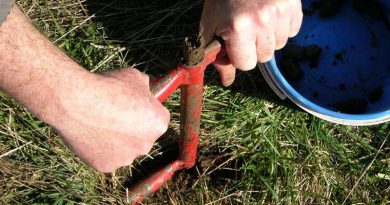2013 lambing highlights benefits of prolific pastures
The 178% lamb marking achieved this spring by the Moffitts Farm Wiltipoll ewes on their second pregnancy highlights one the important connections we see between high year round pasture mass using summer active species, and livestock nutrition, ewe fecundity, ewe health, lamb birth weight and lamb welfare. And that’s just the start of the connections with prolific pasture mass , there are a host of others associated with carbon flows and stock, soil water holding capacity, plant nutrient supply, whole farm biodiversity and low cost of production.
While we anticipated a 120% plus lamb marking, we didn’t think anywhere near 180% was achievable. It happened with no dramas and during a particularly wet, cold and windy August-September.
Relevant data:
Ewe joining weight 24/3/13 65kg
Joining period 8 weeks
Lambing for 93% ewes 6 weeks
Lambing % 178%
Twins % 70%
Triplets% 4.5%
Singles% 25.5%
Assisted% 6.8%
Lamb still born 0%
Birth weights singles 5.0 – 5.5 kg
Birth weights twins 3.6 – 4.4 kg
Birth weights triplet 3.6 – 4.5 kg
Feed on offer 8 week prior to lambing >2500 kg Dry Matter (DM) per ha
Feed on offer at lambing >3000 kg DM per ha September
Feed on offer post lambing >3500 kg DM per ha October
Lambing method Drift off ewes to new paddock as they lamb

Contributing factors towards the result were:
- Excellent ewe conditions scores at joining and during pregnancy, all Condition Score (CS) 3 or better
- Excellent high pasture food on offer (FOO) during pregnancy and especially at and after lambing – means plenty of cover for ewes to lamb in and still graze nearby. High FOO means an ample and balanced nutritional diet is present for ewes minimising risk of diseases like pregnancy toxaemia (twin lamb disease) due to high demand for feed energy especially if carrying twins; hypocalcaemia (milk fever) due to deficiency of calcium in blood complicated by concurrent low blood magnesium and/or phosphorus level and by physical stress associated with mustering and dogs; and hypomagnesaemia (grass tetany) due to a deficiency of blood magnesium complicated by a concurrent low blood calcium and/or phosphorus level and stress associated with mustering and bad weather. Well grown grasses have a more even balance of calcium, magnesium and phosphorus than short, struggling to grow grasses, figure 2. Another advantage of high FOO pasture is low intake of internal worm larvae hence minimum parasite exposure for the ewes and young lambs. Ewes have not been drenched since being purchased in February 2012 and have shown no indication of requiring a drench. A faecal egg count test will be done in November.
- Excellent temperament ewes as a result of previous training, they are unstressed by walking through them during day or night. Easy to quietly drift ewes with new born lambs out of the lambing paddock each day.
- Fox control program started in March with FoxOff baiting and shooting – night spotlighting during lambing. Estimated 6 baits taken while 4 foxes were shot in four months up to lambing.
- High pasture FOO levels combined with conservation corridors provide protection against cold wind and rain related stresses. Mean daily maximum temperature for our district in August is 10.5C and September is 13C. Mean daily minimum temperature for August is 4.2C and September is 5.5C. Wind is an issue by contributing a chill factor of up to -4C to the temperature during these two months.

One of the important consequences of such a high lamb marking percentage in a meat sheep flock is the opportunity it provides to reduce the number of breeding ewes held to achieve the desired carcase weight turn-off per hectare or per 100 mm of rainfall. We are now thinking that we require 33% less ewes to meet our objectives (which were originally based on 130% lamb marking). The consequences of this are important – it means less capital is tied up in ewes and less of the annual pasture growth is required to maintain dry ewes. It is also a great help in allocating more pasture per ewe during the slower growth months of late autumn to early spring. And the effect of higher ewe body weights at joining and during pregnancy – even more lambs. These connections are a winner all round and they don’t cost a cent to implement.
The Victorian DEPI Farm Monitor Project has released it latest report from 2011-12. It is interesting to note the sheep meat specialists lamb marking percentages, table 1. The missing link in the data is the % lambs lost at soon after birth. If this data was kept then producers could work out for themselves their potential lost income as well as potential savings and environmental benefits from carrying less ewes through the months of greatest feed shortage.
Table 1: Victoria Livestock Farm Monitor Project 2011/12 – Lamb enterprises lamb marking percentages
District Average farm LM% Top 20% of farms LM%
Gippsland 111 133
South West 112 107
Northern 107 125



